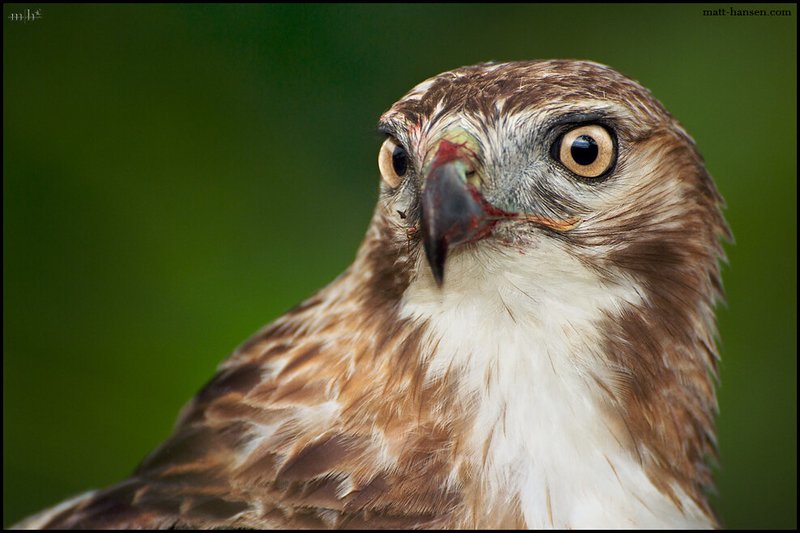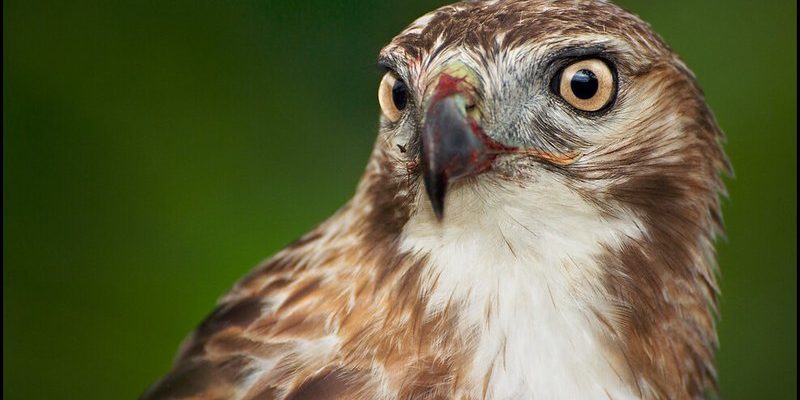
The Red-Tailed Hawk is one of North America’s most recognized birds of prey. With its striking appearance and powerful presence, it captures the imagination of bird watchers, nature enthusiasts, and everyday folks alike. Picture this: you’re on a hike, breathing in the fresh air, when suddenly you spot a hawk soaring effortlessly above. Its broad wings spread wide, gliding on thermal currents, as if it owns the sky.
These magnificent birds are not just pretty faces; they’re also skilled hunters. Their keen eyesight and impressive hunting techniques make them fascinating creatures to observe. Whether perched on a tree branch or soaring through the air, Red-Tailed Hawks show us what it means to be in touch with nature. Let’s dive deeper into their world and discover what makes them so special.
Physical Characteristics
When you first see a Red-Tailed Hawk, the most striking feature is its name-sake red tail. Adult hawks have a rusty red tail that is a key identifier. But there’s more to them than just a pretty feather. Their wingspan stretches between 45 to 52 inches, making them one of the larger hawks in North America. You can imagine their powerful wings propelling them through the air, almost like a well-crafted airplane flying against a blue sky.
Body-wise, these birds exhibit a mix of brown and white plumage, with lighter underbellies that showcase beautiful streaks. Their legs are strong and feathered, allowing them to grip tightly onto branches and prey. Not to mention, their beaks are hooked and sharp, perfectly designed for tearing flesh. Think of the Red-Tailed Hawk as nature’s ultimate predator, equipped with all the tools it needs to thrive.
Additionally, juvenile Red-Tailed Hawks often sport a different palette. Instead of the distinct red tail, they can have a banded tail that may confuse some observers. As they mature, those red feathers emerge, marking their transition into adulthood. This changeover is a beautiful reminder of how nature adapts and evolves over time.
Habitat and Distribution
Red-Tailed Hawks are incredibly adaptable, thriving in a variety of habitats across North America. From deserts to forests, and even urban areas, they can often be found soaring high or perching on telephone poles. If you live in the countryside or even near cities, you might spot them more often than you think. Their ability to adjust makes them a common sight on long road trips or leisurely drives through rural landscapes.
These hawks prefer open areas where they can hunt small mammals, which is why you often see them in fields and along highways, scanning the ground for potential meals. Their keen eyesight allows them to spot a mouse from hundreds of feet in the air—pretty impressive, right? It’s like using binoculars without actually having to hold anything!
In terms of geographic range, the Red-Tailed Hawk can be found from southern Canada all the way down to central Mexico. During winter months, they tend to migrate southward, while some remain in the northern regions if food is plentiful. This migratory behavior showcases their instinctual drive for survival and highlights just how versatile they are.
Diet and Hunting Techniques
The diet of a Red-Tailed Hawk primarily consists of small mammals, including rabbits, rodents, and squirrels. However, they are opportunistic feeders, meaning they’ll indulge in birds, reptiles, and even insects when the opportunity arises. Think of them as nature’s versatile diners—always ready to adapt their meals based on what’s available. They can be quite opportunistic, often scouring the landscape for the easiest catch.
One of the most astounding aspects of their hunting strategy is their ability to soar high above their territory, using their sharp eyesight to spot potential prey from great distances. From that aerial vantage point, they can plan the perfect dive. Here’s a fun fact: when they do decide to swoop down, they can reach speeds up to 120 miles per hour! Imagine a supersonic jet cutting through the sky, but instead, it’s just your friendly neighborhood hawk catching lunch.
Once they’ve identified a target, Red-Tailed Hawks use a combination of stealth and speed to approach it. They often hunt from a perch, waiting patiently for the right moment to strike. Their talons are powerful and equipped to hold onto their meals, ensuring that once they catch anything, it doesn’t slip away easily. This meticulous method is what makes them such successful hunters in the wild.
Breeding and Nesting Behavior
Red-Tailed Hawks typically mate for life, which is quite sweet if you think about it. Their courtship rituals often involve impressive aerial displays where males perform dives and swoops to attract females. Once they’ve paired up, they work together to build a nest, which is usually located high in a tree or on cliffs. The nest itself is a bundle of twigs, grass, and feathers—basically their version of an upscale condo!
Once nesting season rolls around, the female lays usually 1 to 5 eggs, and both parents take turns incubating them. It’s crucial for them to work as a team during this stage because those little hatchlings will need plenty of care once they arrive. The chicks are born blind and helpless, relying on their parents for food and protection until they can spread their wings and fly.
After about six weeks, the young hawks begin to fledge. You may see them hopping around their nesting area, flapping their wings in an attempt to take flight. It’s a heartwarming sight, as the parents continue to care for them during this risky phase of their development. Eventually, the fledglings will learn to hunt on their own, marking their transition into independence and adulthood.
Conservation Status
Fortunately, the Red-Tailed Hawk is not currently considered endangered. Their adaptability and wide range help them thrive in various environments. However, that doesn’t mean they’re free of challenges. Habitat loss due to urbanization, agriculture, and climate change can impact their populations. If you think about it, it’s like losing your favorite parks or natural spaces—you’d feel it too!
Conservation efforts are crucial to ensuring that this majestic bird continues to grace our skies. Organizations and bird watching groups often promote habitat protection and restoration initiatives to help maintain the ecosystems that Red-Tailed Hawks rely on. By supporting wildlife conservation efforts, we can all do our part to make sure future generations can enjoy these incredible creatures.
In many areas, Red-Tailed Hawks are also protected under the Migratory Bird Treaty Act, which prohibits hunting and capturing these birds without a permit. This legal benefit helps keep their populations stable and allows them to continue fulfilling their role in the ecosystem. When you see a Red-Tailed Hawk soaring in the sky, know that they are a symbol of resilience and the beauty of nature’s balance.
Interesting Facts About Red-Tailed Hawks
| Scientific Name: | Buteo jamaicensis |
| Size: | 20 to 26 inches in length |
| Wingspan: | 45 to 52 inches |
| Weight: | 1.5 to 3.5 pounds |
| Diet: | Small mammals, birds, reptiles |
| Life Expectancy: | Up to 20 years in the wild |
| Typical Habitat: | Open fields, forests, deserts |
FAQ
What do Red-Tailed Hawks eat?
Red-Tailed Hawks primarily feed on small mammals such as rabbits, squirrels, and rodents. They’re opportunistic hunters, though, so they also eat birds, snakes, and even insects when the opportunity arises. Their hunting strategy involves soaring high and scanning the ground, making them incredibly efficient predators.
How can I identify a Red-Tailed Hawk?
You can identify a Red-Tailed Hawk by its distinctive rusty red tail and broad wings. Look for their large size and the classic “Hawk” silhouette in the sky. They often perch on tall trees or telephone poles, making them easier to spot. If you see a hawk with a banded tail and lighter plumage, remember that it could be a juvenile that hasn’t developed the red tail yet.
Are Red-Tailed Hawks solitary or social?
Red-Tailed Hawks are generally solitary outside of the breeding season. They prefer to hunt alone, using their keen eyesight and stealth. However, during breeding season, you’ll often see them working together as a pair, which makes them quite the cooperative duo when raising their young.
Do Red-Tailed Hawks migrate?
While some Red-Tailed Hawks migrate to warmer regions during winter, many remain in their territories if food is abundant. Their migratory patterns can vary based on location and climatic conditions. Those in northern regions tend to migrate south, while those in milder climates may stay put.
How long do Red-Tailed Hawks live?
In the wild, Red-Tailed Hawks can live up to 20 years, although their lifespan can be shorter due to environmental hazards, predation, and human activities. This long lifespan allows them to maintain stable pairs and raise multiple broods over their lifetime.
What role do Red-Tailed Hawks play in their ecosystem?
As top predators, Red-Tailed Hawks play a crucial role in their ecosystem by helping to control rodent populations. This balance is essential for maintaining healthy wildlife populations and ecosystems. Their hunting practices contribute to the biodiversity and stability of their habitats.
Are Red-Tailed Hawks protected by law?
Yes, Red-Tailed Hawks are protected under the Migratory Bird Treaty Act in the United States. This legislation prohibits hunting or capturing these birds without proper permits, ensuring their populations can remain stable. Conservation efforts continue to be important in protecting their habitats.

